May
This month’s focus is on wrapping up the school year. All year, you have used the Rubric of Effective Practices for Students with Complex Access Needs and the Administrator Companion Document to the Rubric of Effective Practices for Students with Complex Access Needs to guide your practice. This month, you will work on closing out the year for a smooth summer transition for you and your students. Download or print the May Monthly Instructional Guide Checklist for your reference.
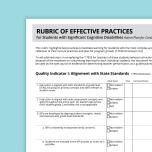
Significant Cognitive Disabilities, Behavior, Instruction, ARD/IEP Supports, Inclusion
Rubric of Effective Practices for Students with Complex Access Needs
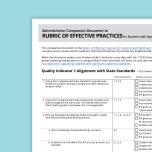
Significant Cognitive Disabilities, ARD/IEP Supports, Instruction, Assistive Technology, Behavior, Inclusion
Administrator Companion Document to the Rubric of Effective Practices for Students with Complex Access Needs
Prepare for Student Transitions
Prepare for student transitions to new classrooms or schools.
- Organize student information.
- Arrange student visits to the new educational environments if possible.
Organize Student Information
A swift transfer of student information from one team to the next helps ease student transitions. The transfer of IEPs is handled by the school district, but classroom staff can transfer student portfolios that contain important information about the student to give the new team a solid start. Provide your contact info for the next team so that they can reach out if they have any questions.
Arrange Student Visits to New Environments
When a student is moving to a new setting, try to have the student visit the new environment and staff members prior to the transition to help alleviate anxiety and make the transition easier. If a visit is not possible, consider creating a social narrative, power card, or welcome video by collaborating with the receiving team to prepare the student for the transition.
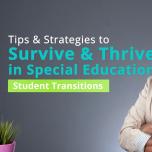
Significant Cognitive Disabilities, Transition
Transitioning Students to New Educational Settings

Significant Cognitive Disabilities
Supporting Student Transitions
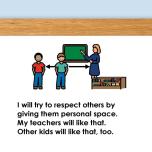
Autism, Behavior
Social Narratives

Autism, Behavior
Power Card
Reorganize Your Classroom
Reorganize your classroom and materials.
- Pack up or rearrange instructional materials.
- Sort paperwork.
Instructional Materials
You may need to move classrooms over the summer or pack up your classroom completely for campus maintenance. Your district may have an official inventory of materials you will need to check off and account for as you pack up. Go through your materials and organize them to make it easy for you to find what you need next year when setting up your classroom again. Remove any items that are unnecessary and make a list of any items you would like to replace over the summer break.
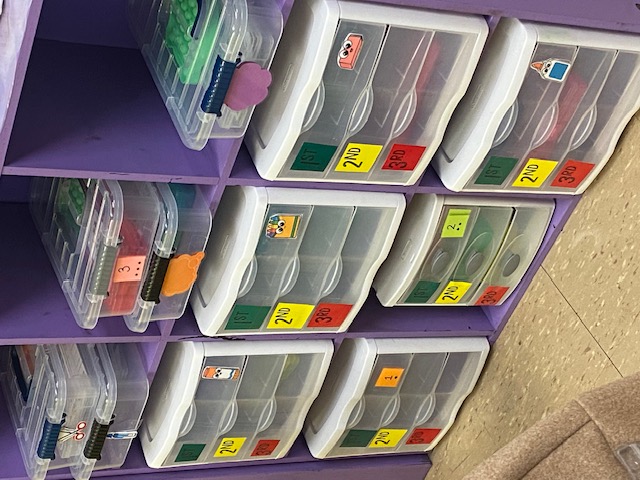
Organized student independent work systems. Catherine Pratt, 2023
Paperwork
As you near the end of the school year, shred any unnecessary confidential documents and toss any unwanted papers. Make sure you have updated student progress reports. Clean out and make sure student portfolios are current. Prepare any portfolios you will be sending out over the summer for students who are transitioning to a new environment.

Clean out paperwork before the summer break. Shannon Beyer-Kaminski, 2023
Plan for Next Year
Plan for a smooth start next year.
- Review student information.
- Consider revisions to your classroom structure.
- Design instructional activities.
Review Student Information
Review data sheets, IEP progress, and their next grade level TEKS for any students that will be returning next year. Make notes of current levels of performance so you can check for regression at the beginning of the new school year. Think about where you will begin instruction for the next year.
If possible, gather any information you can about any new students that will be transitioning to you after the summer break. Prepare a student-at-a-glance sheet to organize the information. In addition to reviewing their IEPs and related TEKS, try to prepare any student supports you will need for your new students. Having these ready now will help your classroom run more efficiently right from the start of the new school year.

Autism, Behavior, Significant Cognitive Disabilities
Student At-A-Glance
Consider Revisions in Structure
If you are moving classrooms or getting new students next year, you may need to look at adjusting your classroom layout. Using what you know about upcoming students, think ahead about any new areas you may need to add to your classroom. Are there any spaces you could eliminate? Will there be any new routines and procedures to put in place? Will you need any visual supports to accompany these changes?
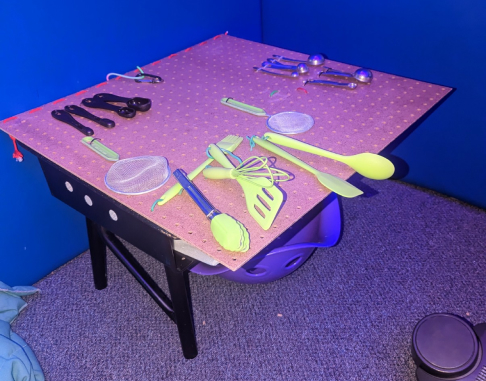
Position board in a sensory area. Catherine Pratt, 2023
Design Instructional Activities
As you review student information, think about where you will begin instruction for next year. Are there any instructional activities you can prepare ahead of time so that they will be available right from the first day of school? Planning a few solid activities for students now will keep you from getting overwhelmed during the hectic back to school rush.
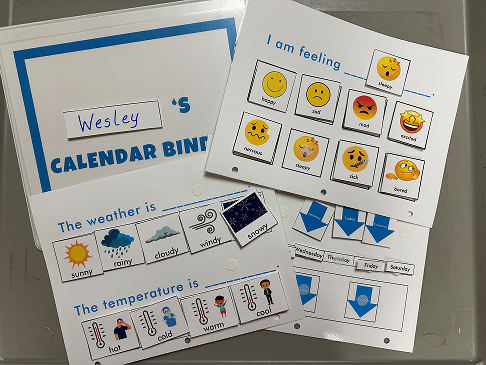
Individual student calendar binder. Shannon Beyer-Kaminski, 2023
Extend Your Learning
Over the summer, many educators engage in professional development for inspiration and to hone their skills. Once you have taken time to rest, check out all the free online courses in Texas SPED Support’s Learning Library and reach out to your regional Education Service Center (ESC) contacts for additional summer training and coaching opportunities.
Final Thought: Plan for future success
This month, you are preparing for students to transition to new environments and reorganizing your classroom to get ready for the summer break. With a little planning now, you can prepare for a successful start to the next school year. Review the progress your current students have made and gather whatever information you can on new students who may be coming next year. Think ahead about how you can structure your classroom and design instructional activities that meet your future students’ needs. You have worked hard this year, now enjoy your summer break!
Looking Ahead
If you are teaching summer school, remember that the key concepts and best practices covered in these Monthly Instructional Guides apply then too!
